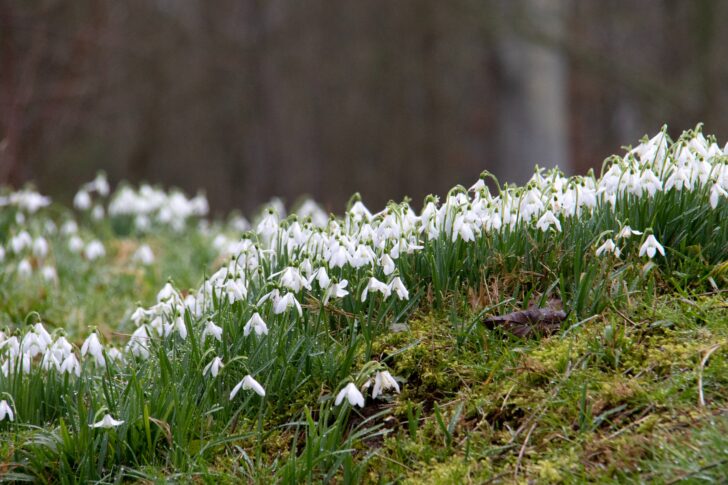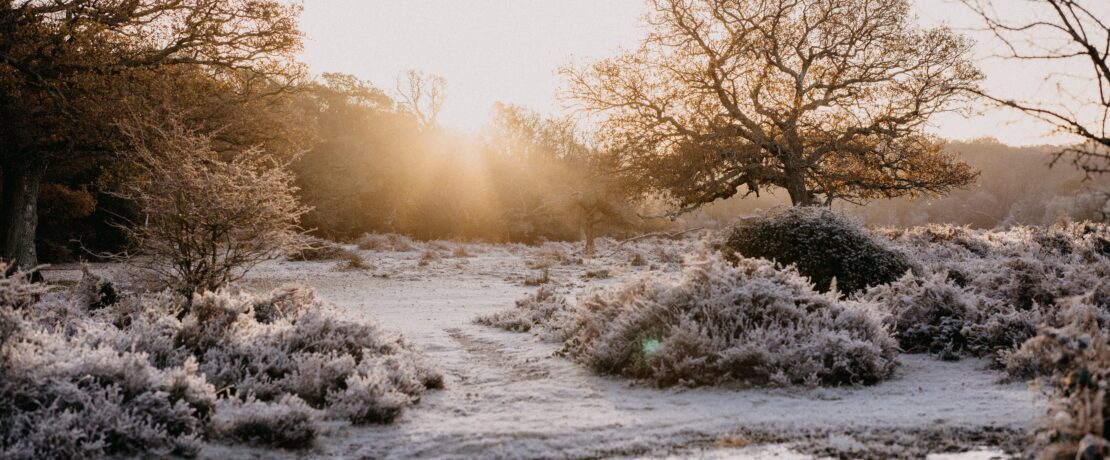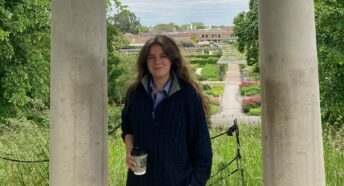Reinventing The Wheel
Keli Tomlin reflects on how a changing climate is shifting the seasonal cues embedded in folklore and history.
It will soon be the Winter Solstice, one of eight festival days on the Wheel of the Year, a calendar that marks the turning of the seasons in Britain. The festivals themselves have old roots, in the stories and traditions of Celtic and English folklore, but the Wheel itself was formed around seventy years ago, by practitioners of neo-pagan traditions such as Wicca.
I’ve used the Wheel as a framework for my own nature-based spirituality since I was a teenager, and in recent years I’ve seen it become more mainstream, often used as a tool for practising mindfulness and nature connection. I’ve also noticed that the structure of the Wheel has started to feel a little wobbly.
No blossom for me
On 1 May last year, it was Beltane, and I expected the trees and hedgerows of the Peak District village where I live to be frothing with blossoms. Instead, I watched a grey drizzle slough away the tattered petals of the cherry tree in my garden; they had shrivelled and burnt during an unexpected heatwave the week before. The hawthorn hedges in the park, on the other hand, were still tightly in bud, refusing to open until two weeks later. No blossom for me.
That same year on 23 September, the Autumn Equinox, I visited my favourite oak tree to leave bird seed and water in thanks for harvest time. It was so hot that day, I wore flip flops and a light summer dress. I returned from my two mile walk with scuffed toes, sweaty everything and a headache from the glare. The unseasonal warmth followed us into a mild winter, characterised by mud, damp, and disappointment.
A warped cycle
We are living through unprecedented temperature increases and the traditional indicators of our seasonal cycle have begun to warp. The timing of each seasonal shift is changing and the themes and folklore once associated with each season are becoming less accurate or relevant, as our environment and lifestyles change too. For example, four of the Wheel’s eight festivals track important agricultural events from a time when farming was a much smaller, localised activity. The festivals helped communities to work together to survive. Nowadays, in our world of supermarkets and industrialised farming, these festivals no longer align with our lived experiences, and the Wheel is at risk of becoming a comforting pastoral smoke-screen, behind which the pressing reality of climate crisis could hide.
But I believe that consciously following the seasonal Wheel of the Year can help me, and others, engage more fully with the environment and the climate crisis itself.
Creating new stories
It starts with taking notice, when I am outdoors or looking out of the window. I tune in to sounds, scents, and sensations, and try to be curious about how the season is developing. I watch the wildflowers and weeds, and let the first snowdrop, the first crocus, the first celandine guide me gently from winter into spring. Then come buds, blossoms and the tentative nubs of becoming-fruit, to lead me into summer. The arrival and departure of the swifts guide me through summer towards autumn, and only when their screeching cries no longer echo around our village do I notice the falling leaves. I wait for a very particular scent on the air that lets me know autumn has arrived. The lengthening nights and that first stiff, sharp breeze will let me know that winter is back again.

Having gathered this sensory input, I interrogate the old stories and traditions from the Wheel and from my past, to see if they still resonate with the world I am living in. If not, I use my own observations and experiences to create new ones. At Summer Solstice, June 21/22, when the stories would have me out in the sunshine celebrating its power and majesty, I am more likely to find a shady spot and ponder the draining effect that summer has on me, how it overwhelms my system with too much heat and light. I look at the grass and trees and see their green skins fading to brown, yellow, grey in a heatwave. I smell the dangerous smoke of moorland fires, heather and gorse kindled so easily on the tinderbox hillsides.
New light and new life
By acknowledging the turning seasons – both how I expect them to look and how it looks in reality – I embrace the idea of destabilisation. Staying with that idea, even when it’s easier to look away, is important but uncomfortable and the Wheel helps me do it. It keeps my eyes open and my mind and body engaged with the seasons over long periods of time. I become aware of how I am personally impacted by changes to weather, daylight, what I see and sense around me. I recognise the intrinsic connection between myself and my environment, which encourages me to make choices and fight for changes that preserve the wider ecological whole. I come into an active relationship with the world around me. Relationships take work. They require presence, responsiveness, consistency, and compassion; all qualities that are powerful and necessary for climate awareness and activism.
I now walk the Wheel of the Year as a conscious act of creation and conversation with this changing world and climate. Sometimes it can be overwhelming and frightening, and I long for that easy, old, reliable structure to lean on. I try to remember that by reinventing the Wheel, I am inviting change and growth, and at the heart of both these things lies hope. And the Wheel keeps turning, regardless of human change or intervention, so after every dark night and dark season, new light and new life will emerge.
About the author
Keli (she/they) has worked with words all her life; first as a performer living in London and then as a Celebrant in the Peak District. Keli is now working towards a Masters Degree in Creative Writing at Manchester Metropolitan University, and is the author of Walk the Wheel. Find out more here – www.kelitomlinwrites.com






